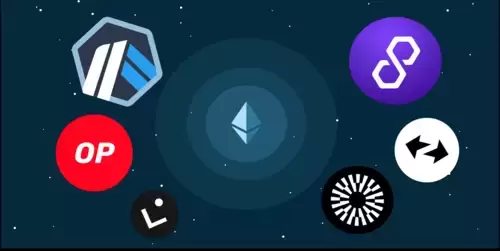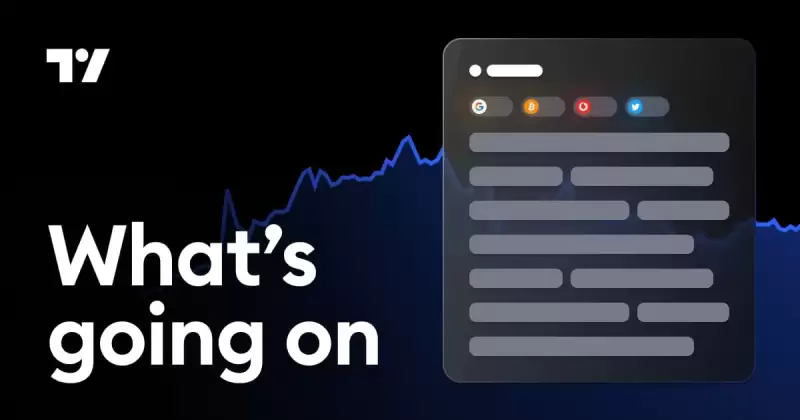 |
|
 |
|
 |
|
 |
|
 |
|
 |
|
 |
|
 |
|
 |
|
 |
|
 |
|
 |
|
 |
|
 |
|
 |
|
上周,加密货币空间发生了很大的事情,但只有少数人完全理解其意义。

Last week, something huge happened in crypto, but few realized its full implications. Celo announced its transition from an independent L1 blockchain to an L2 blockchain on Ethereum.
上周,加密货币发生了巨大的事情,但很少有人意识到它的全部含义。 Celo宣布过渡从独立的L1区块链到以太坊上的L2区块链。
This might seem like another tech migration, but it’s a sign of a broader shift that Ethereum has been silently driving, one that’s quickly changing how we view projects in crypto. Let’s break this down further.
这似乎是另一种技术迁移,但这是以太坊一直在默默地驾驶的更广泛转变的迹象,这种转变正在迅速改变我们在加密货币中的看法。让我们进一步分解。
1. Industry begins to take cost & revenue issues seriously
1。行业开始认真对待成本和收入问题
We are in the midst of a long overdue correction. Crypto markets are beginning to refocus on fundamentals. Narratives still matter, but now people are asking:
我们正处于长期的逾期校正之中。加密市场开始重新关注基本面。叙事仍然很重要,但是现在人们在问:
* What’s the actual revenue of this chain?
*该链的实际收入是多少?
* How much does it cost to operate?
*运营费用是多少?
* Where does value accumulate?
*价值在哪里积累?
A host of new metrics, like market cap to revenue (REV), are coming into play, revealing stark differences between seemingly similar blockchains.
许多新的指标,例如收入市值(REV),都在发挥作用,揭示了看似相似的区块链之间的明显差异。
This may be why Celo decided to switch to Ethereum L2.
这可能就是为什么Celo决定切换到以太坊L2的原因。
2. L1 cannot generate revenue, but L2 can
2。L1无法产生收入,但是L2可以
This is often overlooked: L1 chains are not able to generate revenue in a sustainable way.
通常会忽略这一点:L1连锁店无法以可持续的方式产生收入。
Why? Because all value goes directly to stakers or miners. L1 collects fees, which are immediately distributed as block rewards or staking returns. There is no retained profit margin, no surplus, and no funds are left to fund innovation or protocol development.
为什么?因为所有价值都直接归功于Stakers或矿工。 L1收集费用,这些费用立即分配为块奖励或放电回报。没有保留利润率,没有盈余,也没有资金来资助创新或协议开发。
This creates a strange situation where L1s can be extremely valuable platforms but still operate like public infrastructure, with no built-in funding mechanisms to enable their development and evolution.
这创造了一个奇怪的情况,即L1可以是极为宝贵的平台,但仍然像公共基础设施一样运行,而没有内置的资金机制来实现其发展和发展。
Contrast this with L2, which is able to retain and redeploy revenue. Collator fees, maximum extractable value (MEV), or even custom charges for block space can be retained and reinvested in R&D, developer funding, growth promotion activities, or public goods. This is a model that can achieve true sustainability and align incentives over time.
将其与L2进行对比,L2能够保留和重新部署收入。可以保留和重新投资于研发,开发人员资金,增长促进活动或公共物品的碰撞费用,最高可提取价值(MEV),甚至可以保留块空间的自定义费用。这是一个可以随着时间的推移而实现真正的可持续性并保持激励措施的模型。
This is why so many new ecosystems choose to prioritize building L2. It’s not just about technical architecture, it’s also about economic design.
这就是为什么这么多新的生态系统选择优先考虑建筑物L2的原因。这不仅与技术架构有关,还与经济设计有关。
3. L1 is the mainframe in the Web3 era
3。L1是Web3时代的大型机
Here’s a simple mental model: L1 blockchains are like mainframes for crypto.
这是一个简单的心理模型:L1区块链就像加密货币的大型机一样。
In the early days of the Internet, if you wanted to run a serious application, you had to buy a mainframe. You had to maintain the hardware, write your own network stack, and be responsible for every aspect of the system’s uptime, security, performance, etc. It was powerful, but expensive.
在互联网的早期,如果您想运行严重的应用程序,则必须购买大型机。您必须维护硬件,编写自己的网络堆栈,并负责系统正常运行时间,安全性,性能等方面的各个方面。它功能强大,但昂贵。
Running an L1 blockchain today faces a similar situation. You need your own consensus mechanism, your own set of validators, and your own token incentives to secure the network. It costs you millions of dollars every year to keep the system running and secure.
今天运行L1区块链面临类似的情况。您需要自己的共识机制,自己的验证器集以及自己的令牌激励措施来确保网络。它每年花费您数百万美元,以保持系统运行和安全。
Taking Celo as an example, they spend 4% to 6% of the total token issuance each year, about 15 to 25 million US dollars per year, just to maintain basic security and normal operation of the system.
以Celo为例,他们每年要花4%至6%的代币发行,每年约15至2500万美元,只是为了维持系统的基本安全性和正常运行。
This is not uncommon. It’s true for Ethereum and it’s true for Solana. Every independent L1 has to bear this cost. But the key is: this cost does not decrease with scale. If you are a smaller L1 chain, the cost you bear may be overwhelming.
这并不少见。以太坊是正确的,对于Solana来说也是如此。每个独立的L1都必须承担这一费用。但是关键是:此成本不会随规模而降低。如果您是较小的L1链,那么您承担的成本可能会压倒性。
4. L2 is like a hosted server: just as powerful, but cheaper
4。L2就像托管服务器:强大但更便宜
Now imagine that instead of running a mainframe, you switch to a managed server.
现在,想象一下,您没有运行大型机,而是切换到托管服务器。
You still have control over your environment, you can customise how your blockchain runs, and you still have autonomy over execution, but you don’t have to secure the physical equipment yourself, which is what L2 on Ethereum does.
您仍然可以控制自己的环境,可以自定义区块链运行方式,并且仍然具有执行自主权,但是您不必自己保护实物设备,这就是以太坊上的L2。
Celo, as L2, will still provide the same user experience. But now, the heavy lifting of security, such as fraud proofs, consensus mechanisms, and finality of the base layer, is handled by Ethereum. The cost of maintaining this chain has dropped significantly.
celo,如L2,仍将提供相同的用户体验。但是现在,以太坊处理了安全的繁重提升,例如证明欺诈,共识机制和基础层的终结性。维持这家连锁店的成本已大大下降。
Instead of $20 million per year in security costs, the costs are now just state storage fees and data availability costs, which can be further reduced through data compression and the use of alternative data availability layers (Celo chose EigenDA).
现在,这些成本只是国家存储费和数据可用性成本,而不是每年的安全成本2000万美元,可以通过数据压缩和使用替代数据可用性层(Celo选择Eigenda)进一步降低。
5. Why this is a strategic masterstroke for Ethereum
5。为什么这是以太坊的战略硕士
This isn’t just about Celo; it also means that Ethereum’s long-term strategy is finally starting to fall into place.
这不仅仅是Celo;这也意味着以太坊的长期战略终于开始到位。
Ethereum is no longer seeking to be the “one server to rule them all.” That vision of a single dominant chain has been proven wrong in every era of computing, whether it’s Web1, Web2, and now Web3.
以太坊不再寻求成为“一台服务器统治所有服务器”。在计算的每个时代,无论是Web1,Web2和现在的Web3,单个主导链的愿景都被证明是错误的。
Instead, Ethereum is becoming a base layer on which other chains can be built, providing security, decentralization, and interoperability as a service.
取而代之的是,以太坊正在成为一个可以建立其他连锁店的基础层,提供安全性,分散性和互操作性作为服务。
Yes, at first glance this looks like cannibalization. Ethereum is reducing the “premium” of its L1 chain. But in reality, it
是的,乍一看,这看起来像蚕食。以太坊正在减少其L1链的“溢价”。但实际上,它
免责声明:info@kdj.com
所提供的信息并非交易建议。根据本文提供的信息进行的任何投资,kdj.com不承担任何责任。加密货币具有高波动性,强烈建议您深入研究后,谨慎投资!
如您认为本网站上使用的内容侵犯了您的版权,请立即联系我们(info@kdj.com),我们将及时删除。
-

- Bybit关闭其NFT和铭文市场
- 2025-04-02 18:45:12
- 加密货币交易所BYBIT宣布关闭其NFT和铭文市场4月8日生效,加入了越来越多的主要平台清单,这些平台放弃了曾经趋向的数字收藏品领域。
-

- X.Me驱动社会革命建立一个新的社会生态系统
- 2025-04-02 18:45:12
- X.Me是一个创新的社交媒体平台,它集成了尖端的AI技术,以挑战传统社交媒体的信任危机。
-

-

-

- Altcoins诺言量高达50%,这引起了投资者的困惑
- 2025-04-02 18:35:12
- 在周二早上,几个山寨币在全球加密交易所二元公司上高达50%,这引起了投资者的困惑。
-

-

- EOS(Vault)价格飙升20%,因为该网络揭幕了其Vaulta银行咨询委员会
- 2025-04-02 18:30:12
- EOS是EOS网络背后的加密货币,一直处于显着的向上轨迹,价值超过20%
-

-

























































